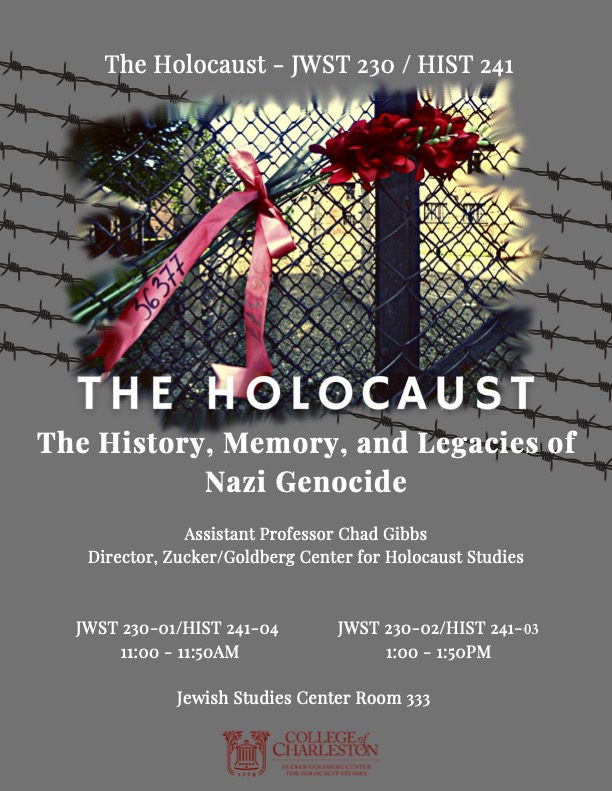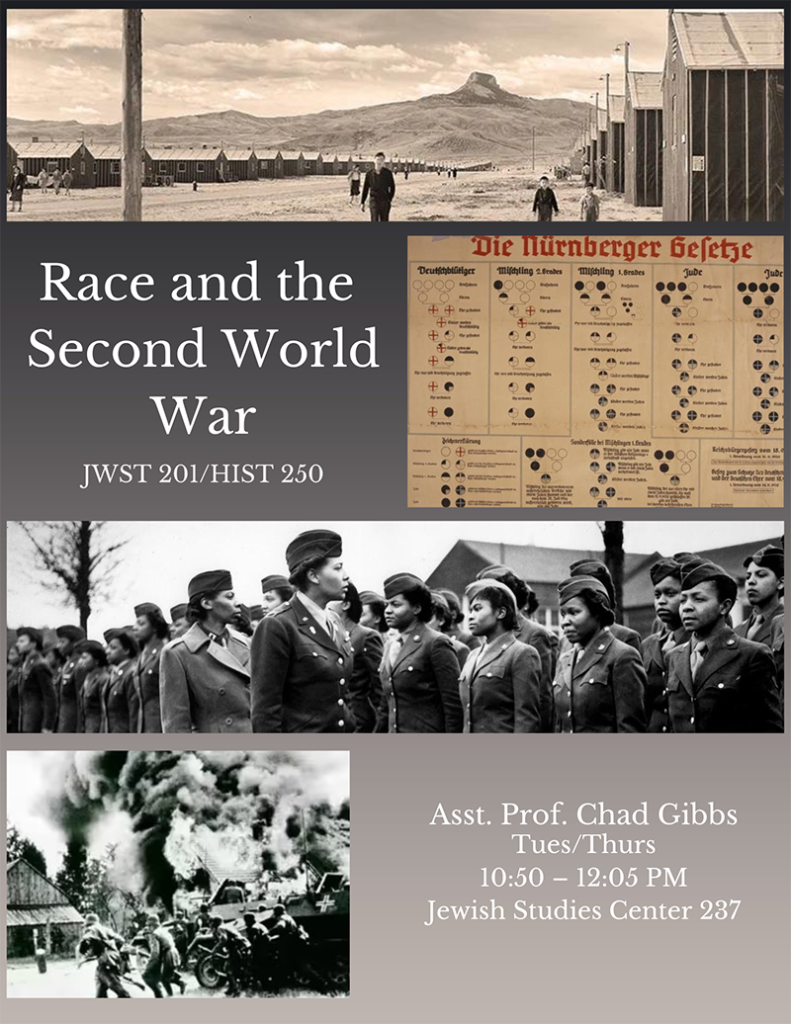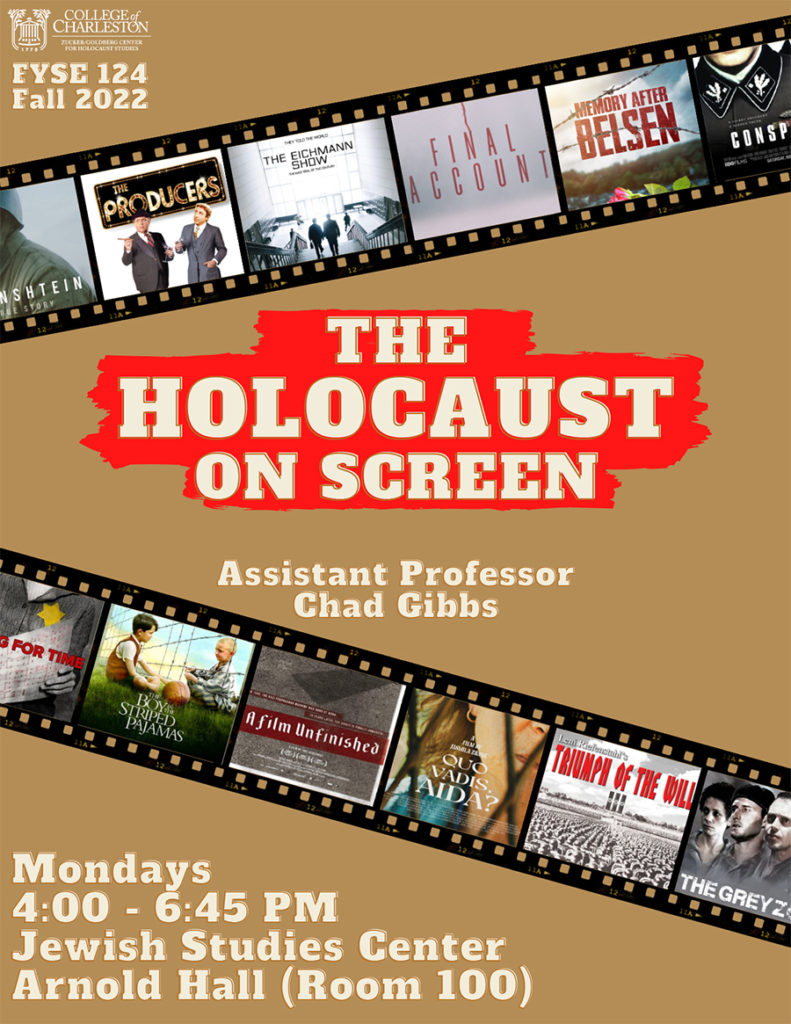Courses
Auschwitz | Photo credit: Chad Gibbs
Spring 2024 Courses
Click on each course title below for a copy of the most recent syllabus.
JWST 404
“Holocaust Legacies and Oral History”
For many, the Holocaust is not the past. It is a part of who they are in both their present and future. Through the creation of oral history interviews that will be permanently housed at Addlestone Library Special Collections, students will come to understand how the Holocaust affects the lives of Second and Third Generation Survivors. In the process, they will gain a foundational knowledge of Holocaust history and its lasting legacies in the present.
Click here for the syllabus used in the first iteration of this course in Spring 2022.
JWST 201/HIST 250
“A History of Lies”
(fulfills humanities gen ed and history transnational credit)
Antisemites return, time and again, to a set of well-worn lies about Jews. Taking apart these common tropes of anti-Jewish thought, their origins, and reappearance through the ages provides chances to analyze the tellers of these tales and why they are so durable. Students will learn how historians approach sources, speakers, and motives in a class that develops pivotal skills for the present day.
Core Courses
Professor Gibbs will regularly offer one or more of the following classes in the Spring or Fall terms
JWST 230/HIST 241
“The Holocaust”
(Fulfills REI Credit and Humanities Gen Ed)
References to the Holocaust abound in the political debates and popular culture of our present. Despite these near-constant allusions to the Nazis and their crimes, however, most know very little about the actual history of the Holocaust. What’s more, much of what people think they know remains dangerously distorted or incomplete. This course fills the gap between modern popular discussion and useful historical fact while introducing students to the people who endured, stood-by, and perpetrated Nazi crimes.
Through short, directed readings, analysis of primary sources, discussions, and by explaining their insights in writing, this course helps students build knowledge of the Nazi genocide of European Jews and others during WWII. They learn how and why the Third Reich and its collaborators carried out a program of persecution and ultimately extermination against the Jewish communities of Europe, leading to the murder of an estimated 6 million men, women, and children.
The history and warnings of the Holocaust are as relevant as ever in the world of today. Through this class, students are introduced to these lessons and legacies as well as their own roles in awareness and prevention as citizens of the world.
JWST 242/HIST 250
“Race and the Second World War”
(Fulfills REI Credit, Humanities Gen Ed, and History Transnational Credit)
From Europe, to America, to Asia, race and racism were driving forces of the Second World War on the battlefield and the homefront. The Holocaust, “War of Annihilation” in Eastern Europe, and combat in the Pacific Theater were all motivated by racist ideas. In America too, race determined the organization of the US Military while the fight against racism renewed by returning African American veterans helped set the course for the postwar Civil Rights movement. Students will learn how race and racism determined the course of the war and the peace that followed, contributing to the creation of the world in which we live today.
FYSE 124
“The Holocaust on Screen”
Most of what the average person knows about the Holocaust comes from the films and documentaries they’ve seen. Whether it be through newsreels or the films of Josef Goebbels’ Nazi Propaganda Ministry, this was true even as the Holocaust took place. All movies, visual documents, and documentaries of the Holocaust from then to now seek to tell the viewer something or elicit a certain feeling. This course begins before and during the Holocaust with the films of the Nazi regime and continues to the present day with several questions: What was the message of these filmmakers? What sense of the past and their present did they try to give audiences? And, speaking of more recent movies and documentaries, what themes predominate and what are the responsibilities of filmmakers and documentarians taking on this topic?





